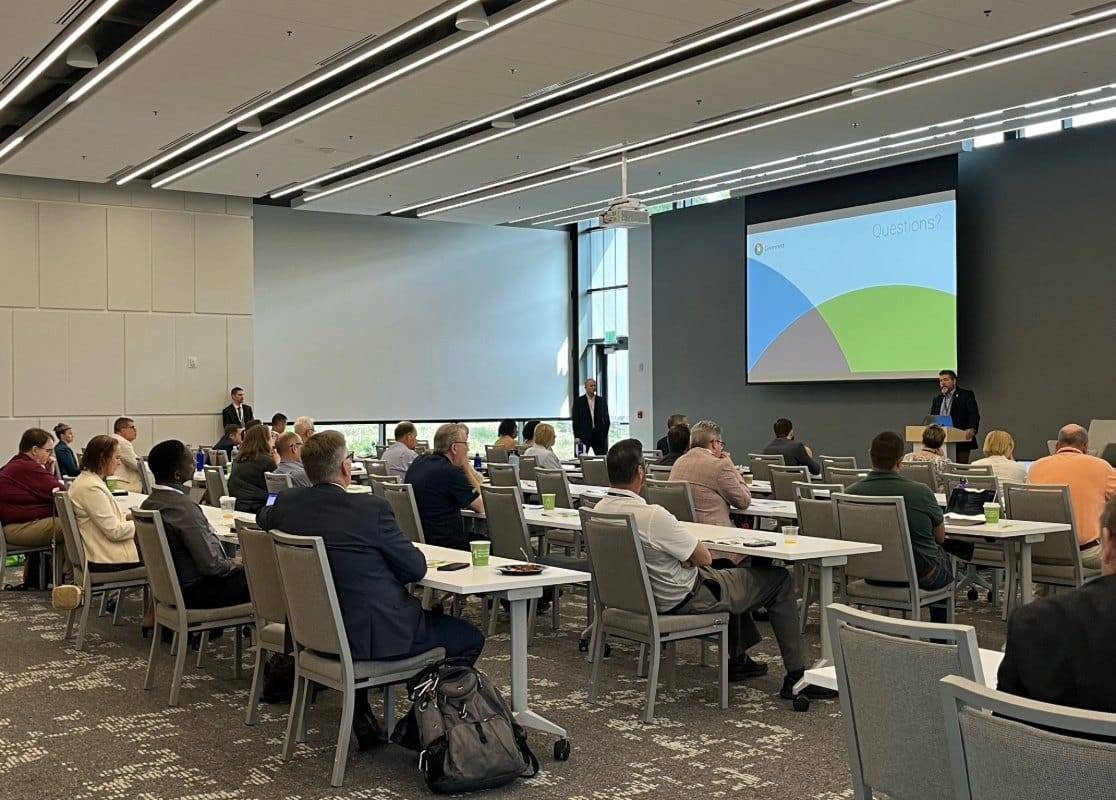Industry Outlook
 John Deere’s Jim Hoke shares his views on the future of the market
John Deere’s Jim Hoke shares his views on the future of the market
As 2018 comes to close, Utility Contractor thought it would be good to glimpse into the future. We asked Jim Hoke, Senior Economist, John Deere Construction & Forestry, to share his perspective on where the market is heading. John Deere is a NUCA Gold National Partner.
What is your outlook for the utility construction market entering 2019? Bullish? Bearish? Why?
Based off current conditions and indicators, I expect modest growth in utility construction as we enter 2019. While housing starts have slowed recently, most of the slowing has occurred in the Pacific Northwest and Northeast. Housing permits have accelerated in the Southeast and Gulf Coast states. Vacancy and pricing trends for most types of nonresidential structures have moved from favorable growth to neutral, but the Architecture Billings Index remains favorable; combined, these lead me to expect flat to slightly up for nonresidential construction. Infrastructure looks promising; Census Construction Put-in-Place spending for all types (road, sewage, water supply, power, and communication) have all risen YTD through September, and with additional $21.2 billion of federal spending signed into law earlier this year, public infrastructure spending should remain solid in 2019.
Funding always plays a key role in moving any project forward. What trends are you seeing in terms of funding?
Funding from the federal, state, and local governments is rising moderately. As mentioned above, the 2018 federal budget included incremental spending that will impact 2018/2019. In addition, many state and local governments have seen budgets increase due to rising home values driving higher property tax collections, and increased sales tax receipts, both of which are helping increase spending on infrastructure repairs and improvements.
Improved technologies and techniques are key to driving the industry forward. What innovations/technologies are you seeing that are changing the way projects are built?
While new machine advancements continue to progress in the construction industry, technology advancement is rising to the forefront of the industry right now. Productivity and uptime requirements are driving the integration of many new technological advances into construction equipment and into overall worksite operations. Advancements in technologies such as grade control, telematics, and UAVs are helping lead to new levels of productivity, uptime and efficiency throughout the construction industry. The areas seen as most ripe for improvement are in the automation of difficult tasks that enable less experienced operators to improve their productivity and reduce the workload of more experienced operators while maintaining productivity.
How do you see recent trends (regulations, tariffs) impacting the market? Is equipment harder to obtain? Are you seeing higher prices?
To this point, tariff actions have not had much impact on demand conditions in the market. But the longer trade tensions persist, especially with China, the more likely they may negatively impact corporate spending on new structures, such as factories, warehouses, and offices. From a cost impact, tariffs have increased prices for aluminum and several types of steel used in construction that are not manufactured in the United States. Equipment availability has been tighter over the last 18-24 months, as construction activity has accelerated over this period, and the tight labor market has challenged the ability of equipment manufacturers to raise production schedules to meet demand. I can’t comment directly on prices, but with higher costs for wages and materials, and shortages, the pressure to raise prices exists in the marketplace.
Employment numbers are a double-edged sword: low unemployment is good, but that means less available manpower for utility construction projects. How is this impacting your business?
Overall, the construction unemployment rate is at the lowest level since the metric was established 18 years ago. Both the American Road and Transportation Builders Association and Associated Builders and Contractors report shortages of skilled and unskilled labor and rising backlogs of work. As a result, wages are rising nationally, and the construction and more specifically utility construction are rising at even faster rates. Per the Bureau of Labor Statistics, private-sector wages grew at 3.1% year over year in October, the highest rate since 2008. Wages for all construction workers rose 3.9%, and utility construction workers rose 3.8%. With the very low unemployment rate and tighter immigration policies, wages will continue to see upward pressure for the foreseeable future.
Following on … what initiatives are you seeing related to developing the workforce?
The most important issues that firms need to address are those concerned with employee retention. Offering competitive pay and benefits are always key to employee retention, but other factors such as worksite safety, flexibility with schedules and time-off, and other work-life balance issues are becoming increasingly important in the workplace, and utility construction firms must also consider these, especially when the labor market is tight. Tags: November December 2018 Print Issue





